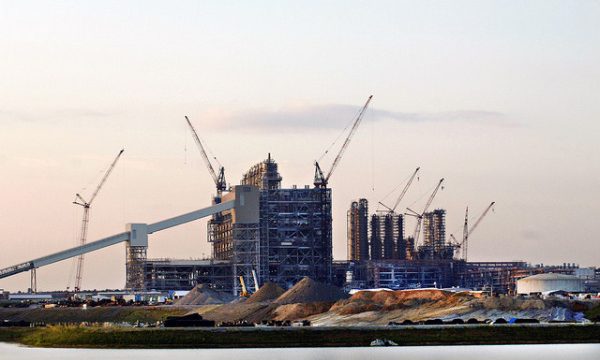Report on Kemper Project casts embattled power plant in poor light

UP, UP AND AWAY: The Kemper Project’s costs have ballooned to $6.1 billion.
By Steve Wilson | Mississippi Watchdog
Imagine a first-of-its-kind power plant that costs $3.6 billion more than originally planned, with safety issues that required expensive, late fixes and a management team that denied delays and cost overruns until papering them over was no longer an option.
That’s the picture painted by a report by POWER Burns & Roe — an engineering firm that specializes in building utility projects — casting Mississippi Power’s stewardship of the Kemper Project clean coal power plant in a poor light.
The report spotlights three problem areas with the coal-gasification power plant known as Plant Ratcliffe and located in Kemper County in east Mississippi. They are:
- Safety issues caught late in the project and fixed at great cost
- Major delays in acknowledging cost increases and delays in plant startup when the causes for those delays were apparent early in the process
- Poor project management
The cost on the plant is up to $6.1 billion, well above the originally planned cost of $2.5 billion It won’t open until 2016, though it was originally scheduled to be in operation this year.
The Kemper Project consists of three primary components: An on-site lignite mine, the coal gasifier, which converts high-moisture lignite coal into a natural gas-like substance called synthesis gas, and a combined cycle plant with power-generating turbines. The 582-megawatt combined-cycle plant has been in commercial operation on natural gas since Aug. 9.
In 2010, the Mississippi Public Utilities Staff, a separate group from the elected Mississippi Public Service Commission, hired Burns and Roe — later acquired engineering firm POWER — to serve as the independent monitor for the Kemper Project. The independent monitoring firm reviews records, observes progress and files monthly reports with the utilities staff.
STILL BUILDING: The Kemper Project power plant, which converts lignite coal into a natural-gas like substance called synthesis gas to burn in its electricity-generating turbines, is two years behind schedule and won’t open until 2016.
Mississippi Power vigorously denied the veracity of the report, but the company didn’t go into specifics.
“Mississippi Power does not agree with many of the accusations contained in the Burns and Roe surrebuttal testimony,” Mississippi Power spokesman Jeff Shepard said in an email. “Mississippi Power has not been asked to respond to this testimony. The company is reviewing the allegations and will address them at the appropriate time. Mississippi Power will continue working with the independent monitors hired by the PSC and the Public Utilities Staff.”
On the safety front, Burns and Roe cited issues with the metallurgy of several components, that they were “inappropriate” and later changed by Mississippi Power. The components were changed because a failure — especially in the synthesis gas scrubbers — could lead to an “explosion due to large release of toxic syngas” and an “uncontrolled ejection of 1,800 degrees Fahrenheit ash into the gasifier structure and onto the plant site.”
The report said “the design changes were made out of necessity and were required to assure the safe operation of the facility.”
Mississippi Power struggled with containing rising costs that weren’t revealed until 2012. In 2010 there began an “upward trend in engineered procured materials” combined with a “corresponding decrease in construction costs,” a phenomena that Burns and Roe found “illogical,” yet the first cost increase wasn’t announced until May 2012.
Burns and Roe reported in November 2012 the plant wouldn’t be ready for its originally scheduled in-service date — May of this year — but Mississippi Power wouldn’t report the delay until October 2013.
The report criticizes Mississippi Power for not building an intermediate test stage of its proprietary transport integrated gasification, or TRIG process, which is how the high-moisture lignite coal is converted into synthesis gas for use in the plant’s turbines. TRIG was tested at a small test facility in Alabama owned by the Southern Co., Mississippi Power’s parent firm, but a larger test facility might have helped the company avoid expensive delays when it scaled up the process to commercial levels.
According to an agreement reached with the PSC in 2013, the company can only charge ratepayers for $2.88 billion of the plant’s cost. Mississippi Power ratepayers are already paying an 18 percent rate hike in their electricity bills to help defray the costs of Kemper.
Get regular updates on Mississippi through our Facebook or Twitter accounts







